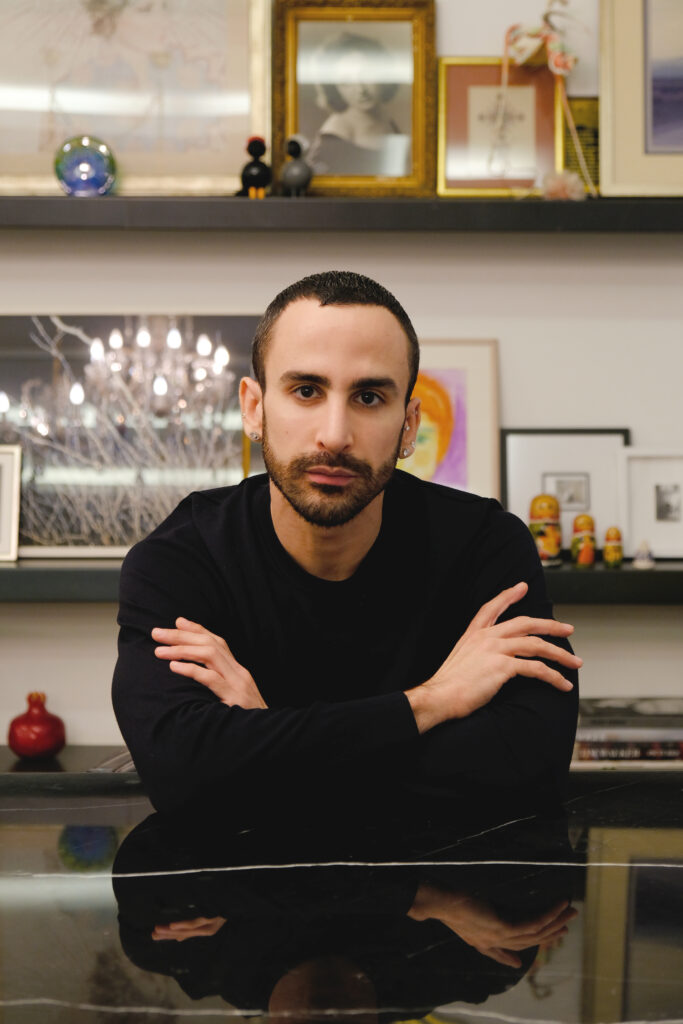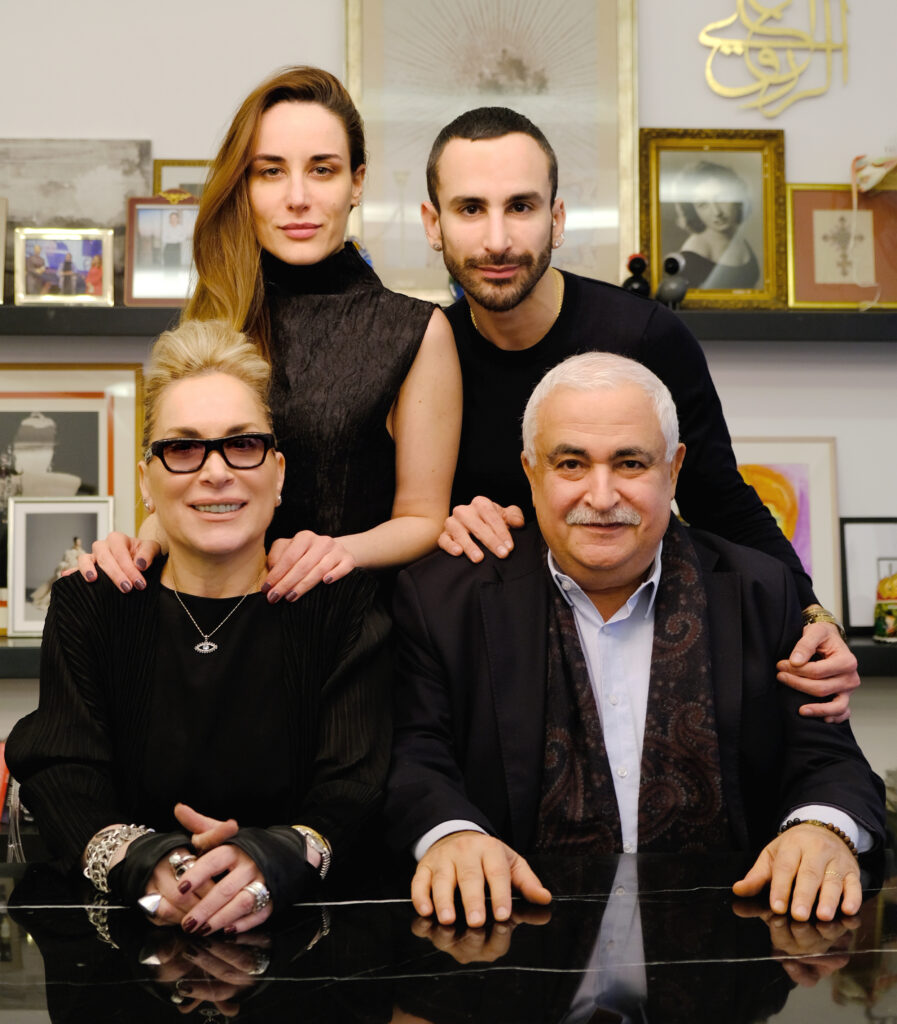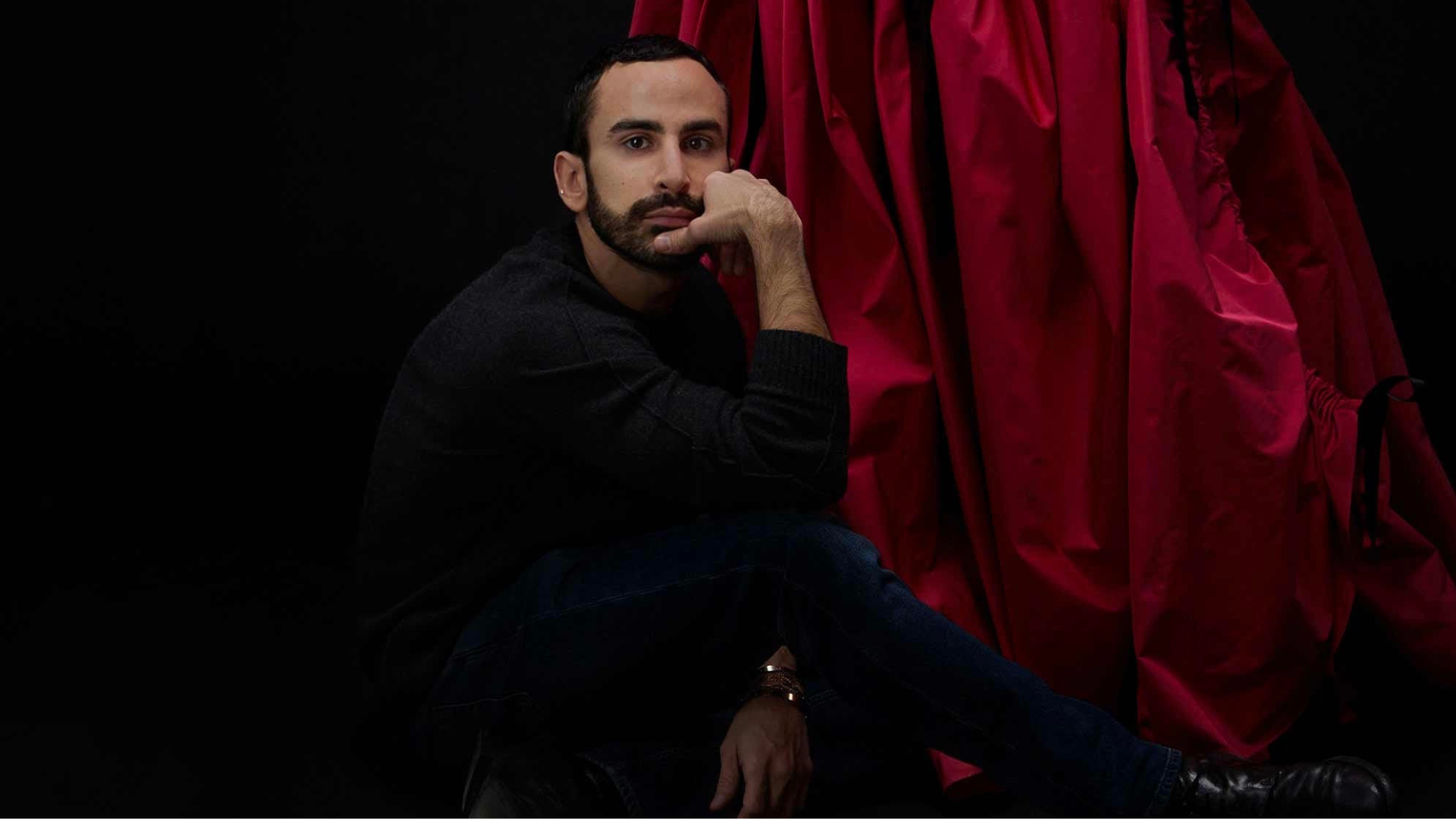Photo Credits: Courtesy of Krikor Jabotian
Krikor Jabotian stands as a defining figure in the world of haute couture, celebrated for his unparalleled craftsmanship and visionary approach to design. Born in Beirut, his dual heritage—Armenian and Lebanese—has profoundly shaped his creative identity, allowing him to seamlessly blend rich cultural traditions with a forward-thinking aesthetic. With a foundation built at a prestigious French fashion school in Beirut, Krikor quickly rose to prominence, gaining recognition for his intricate, handcrafted designs that honor both history and modernity. His work transcends mere fashion; it is an artistic narrative, where each piece reflects not only his technical mastery but also his deep reverence for storytelling and emotional depth. As a pioneer in contemporary haute couture, Krikor’s impact continues to influence and redefine the industry, establishing him as one of the most respected and innovative designers of his generation.
Growing up in Beirut, a city rich in cultural and spiritual history, how did your surroundings influence your perspective on fashion and design? Do you feel that Lebanon’s history and spirit are ingrained in the way you approach your creative process?
KJ- Growing up in Beirut, a city brimming with cultural and spiritual history, has deeply shaped my creative vision. But beyond the city itself, my upbringing in an Armenian Catholic school played a significant role in shaping my creative process. The school instilled in me a strong sense of discipline and organization, qualities that have become foundational to how I approach my work. At the same time, the school placed a major emphasis on arts, nurturing my artistic side from a young age and encouraging me to explore creativity in all its forms.
On a personal level, my heritage, being the son of an Armenian father and a Lebanese mother, has given me a rich tapestry of cultural influences to draw from. This duality has allowed me to see beauty in the blending of traditions, textures, and stories, which I strive to reflect in my designs. Lebanon’s history and spirit are undoubtedly ingrained in my work, but so is the resilience and artistry of my Armenian roots. Together, these elements have created a unique lens through which I view fashion, one that celebrates diversity, craftsmanship, and the power of storytelling.

Photo Credits: Courtesy of Krikor Jabotian
Haute couture is often seen as the pinnacle of fashion. How would you describe the deeper, perhaps spiritual connection you have with the art of creating couture?
KJ – Couture, for me, is a deeply personal experience. There are those moments during the making where everything else fades away, and I am fully focused on the process. It’s as if I’m tapping into something bigger, something that feels bigger than me. It’s about being in tune with the piece and letting it guide me.
The journey of creating couture is long and meticulous, but the sense of fulfillment at the end is unparalleled. Couture is about the hours, the craftsmanship, and the love that go into it. Time becomes a partner in the process, and I’ve learned to respect its role in shaping what is meaningful. Every season, I challenge myself to surpass what I’ve done before, not just for the brand, but for myself. It’s about growth, about becoming a better version of who I am and pushing the boundaries of what’s possible. I don’t take anything for granted. The beauty of the world around me, the cultures, the nature, the stories, they all inspire me. I see them as gifts, and I make it a point to take advantage of every detail, every spark of inspiration, to create something that feels both timeless and transcendent.
You’ve often emphasized the importance of craftsmanship in your designs. On a deeper level, what do you believe is the relationship between a designer’s soul and the craftsmanship that brings a garment to life?
KJ -Craftsmanship is the tangible expression of my being as a designer. My work is a representation, even a projection, of my background, my personality, and the values that guide me. Integrity, ethics, and a commitment to excellence are fundamental pillars in my life, and they naturally extend into my profession. These principles aren’t just abstract ideas; they’re woven into every decision I make, every detail I craft, and every piece I create.
When I design, I share a part of myself. The care, the precision, and the passion I pour into my work are reflections of who I am and what I stand for. It’s this connection between my personal values and my professional practice that gives my designs their depth and authenticity. Craftsmanship, in this sense, becomes more than a skill, it’s a way of honoring my journey and the stories that shape me.
Your designs often showcase intricate Lebanese embroidery and textiles. Do you view your work as a form of preservation, a way of honoring and continuing a legacy, or does it hold another kind of meaning for you?
KJ– For me, it’s a way of honoring the legacy of those who came before me, the artisans and craftsmen who have kept these traditions alive for generations.
But beyond preservation, I see my work as a mission, an urge to share this rich cultural tapestry with the world. In a way, we are ambassadors, carrying the essence of our homeland and its artistry to a global stage. It’s not just about showcasing beauty; it’s about telling a story, one that connects people to a place, a history, and a tradition that might otherwise remain unseen. Through my designs, I hope to bridge cultures, spark curiosity, and inspire a deeper appreciation for the craftsmanship and heritage that define me.

Krikor Jabotian and his family: Courtesy of Krikor Jabotian
Haute couture is undeniably exclusive. Yet, your work resonates with universal beauty. How do you navigate the exclusivity of couture with the notion that fashion, at its core, is a form of personal expression available to everyone?
KJ -Haute couture is, by its very nature, exclusive. It’s a celebration of artistry, craftsmanship, and individuality. While I understand that fashion can be seen as a universal form of personal expression, my work is not designed to speak to everyone. It communicates with a niche audience, those who appreciate the depth, the story, and the meticulous artistry behind each piece.
I don’t create to please everyone, that’s never been my goal. My focus is on staying true to my vision, my heritage, and the values that define my brand. Couture, for me, is about creating something extraordinary for those who connect with it on a deeper level. It’s about offering a unique experience, one that resonates with a select few who share my appreciation for beauty, craftsmanship, and the art of storytelling. In a world that often seeks to cater to the masses, I find strength in exclusivity — it allows me to remain authentic and uncompromising in my creative journey.
When creating a new collection, do you enter a particular mental or emotional space to begin the design process? How do you channel your personal experiences or deeper inspirations into your work?
KJ – Every collection is a new chapter in my life, when I start it I often find myself drawing from moments of profound connection, whether it’s the vibrant energy of Beirut, the resilience of my Armenian roots, or the delicate balance between tradition and modernity. It’s a process that requires me to tap into my innermost self, to reflect on my experiences, my heritage, and the stories that have shaped me. These influences become the emotional foundation of my work. I channel them into every sketch, every fabric choice, every stitch. It’s as if I’m translating feelings into form, giving shape to the intangible.
The making of a new chapter isn’t always easy; it requires vulnerability and honesty. But it’s also incredibly fulfilling. Each collection becomes a mirror of my journey, a way to communicate not just aesthetics, but meaning. It’s a way to honor the past, celebrate the present, and imagine the future. It’s a dialogue between my being and the world, one that I hope resonates with those who encounter my work.
Clothing undeniably shapes one’s identity. In your view, how does a carefully crafted garment, like those you create, influence the inner self of the person who wears it?
KJ – Statement pieces, in particular, have a unique way of influencing the inner self. They demand attention, not just from others, but from the wearer themselves. It’s as if the garment becomes a mirror, reflecting back their strength, their creativity, and their individuality. For me, that’s the magic of fashion. It has the power to transform not just how we look, but how we feel. When someone wears one of my designs, I hope it reminds them of their own brilliance and gives them the courage to shine even brighter.
Your collections often tell a story through intricate details. Do you believe fashion has the power to convey emotion or meaning beyond what is seen with the eyes? How do you want your designs to speak to those who experience them?
KJ – Pieces of a collection and their intricate details are only the beginning of a story I want to tell, one that unfolds through every element that surrounds them.
When I start developing a collection, I think of it as a world unto itself. The pictures from the shoot, the videos, the music, the styling, the hair, the makeup, the models, their poses, their attitude, the set design—all of these elements come together to support the narrative I want to tell. They’re not just accessories; they’re essential parts of the story. Each detail is carefully chosen to evoke a specific emotion, to transport the viewer into the universe I want to communicate.
I want my designs to speak on multiple levels; to the eyes, yes, but also to the heart and the soul. I want them to spark curiosity, to stir emotions, and to invite people to connect with the story behind the collection. Whether it’s a sense of nostalgia, a feeling of empowerment, or a moment of wonder, I hope my work resonates deeply with those who experience it. Fashion, for me, is not just about what you wear, it’s about what you feel, what you remember, and what you dream of.
Your work balances traditional Lebanese techniques with modern innovation. How do you approach this delicate balance, and in your view, is innovation a form of honoring tradition or a break from it?
KJ– Innovation is another way of honoring traditions. Traditions are living, breathing entities; they evolve with time, and it’s our responsibility to ensure they remain relevant in a modern world.
At the end of the day, we need to communicate with the present, and that means finding ways to translate the richness of our heritage into a language that resonates today. By reinterpreting traditional techniques in a contemporary way, I aim to give them a fresh new breath, a chance to thrive in a new context. It’s about preserving the soul of the past while embracing the possibilities of the future.
This delicate balance is what makes my work meaningful. It’s not just about creating beautiful pieces; it’s about bridging worlds, connecting generations, and ensuring that the stories and craftsmanship of our ancestors continue to inspire and captivate. Innovation, in this sense, becomes a celebration of tradition, a way to keep it alive, vibrant, and ever-evolving.
As a designer, you’ve created garments for many women. How do you see your role in not just designing a dress, but creating an experience or transformation for the woman who wears it?
KJ -Fashion is just personal and it’s never a trend. It’s about creating an experience that goes beyond the physical. The way a fabric moves, the way light catches an embroidery, the way a silhouette shapes the body, all of these elements come together to evoke emotion, confidence, and a sense of wonder. I want my designs to be a catalyst for that transformation, to remind the woman wearing them of her strength, her beauty, and her uniqueness.
Ultimately, my goal is to create more than just a dress. I want to create a moment; a memory, a feeling, a connection. It’s about celebrating the woman who wears it and giving her the tools to express her truest self. In that way, fashion becomes not just an art form, but a bridge to something deeper, something timeless.
Looking to the future, what do you hope your legacy as a designer will be? Beyond the fashion industry, how would you like to be remembered, and what enduring qualities do you wish your work to embody?
KJ – I hope my legacy as a designer is one of artistry, emotion, and timeless craftsmanship. Beyond fashion, I want to be remembered as someone who sculpted fabric into stories, who honored the human form with architectural precision and poetic detail. I want my work to transcend fleeting trends, embodying a sense of permanence, creations that feel as relevant and breathtaking decades from now as they do today.
More than anything, I wish to leave behind a spirit of fearlessness in creativity, proving that couture is not just about garments but about a breath, an identity, culture, and dreams woven into reality. If my work can evoke a sense of wonder, inspire future generations to push boundaries, and remind people of the transformative power of aesthetics, then I will have fulfilled my purpose.

